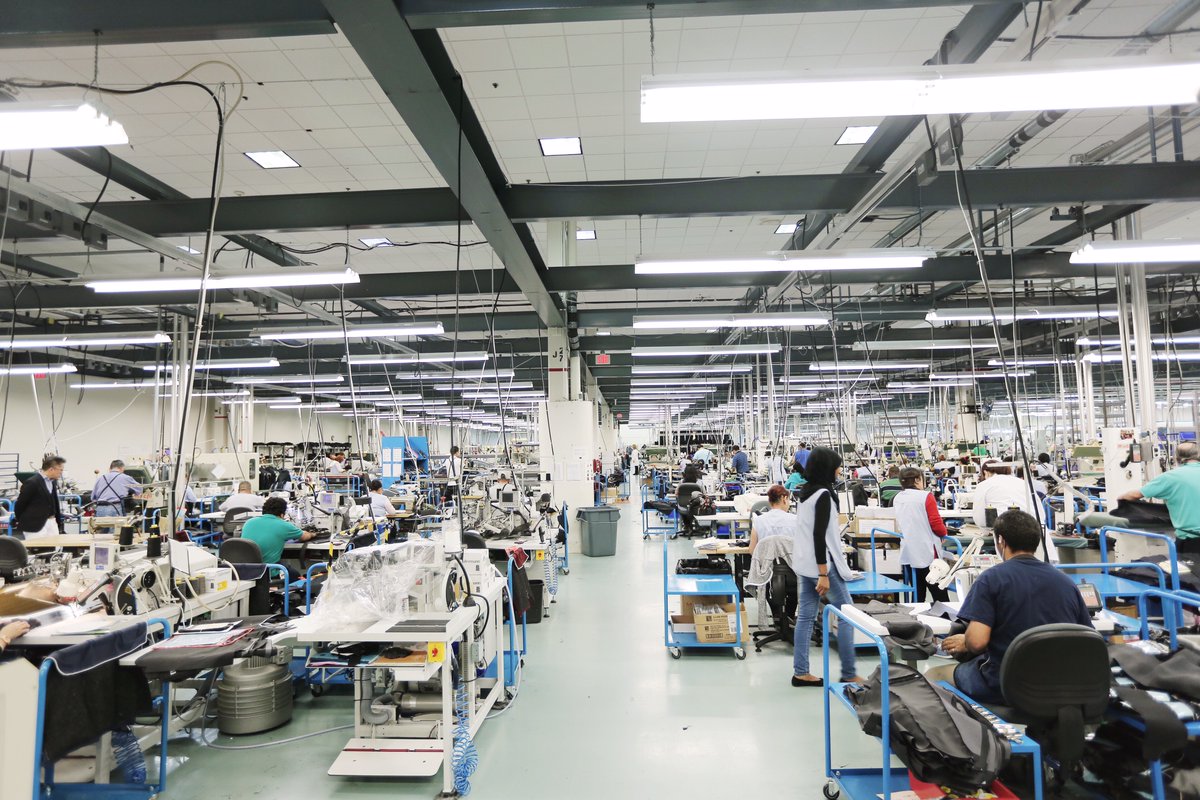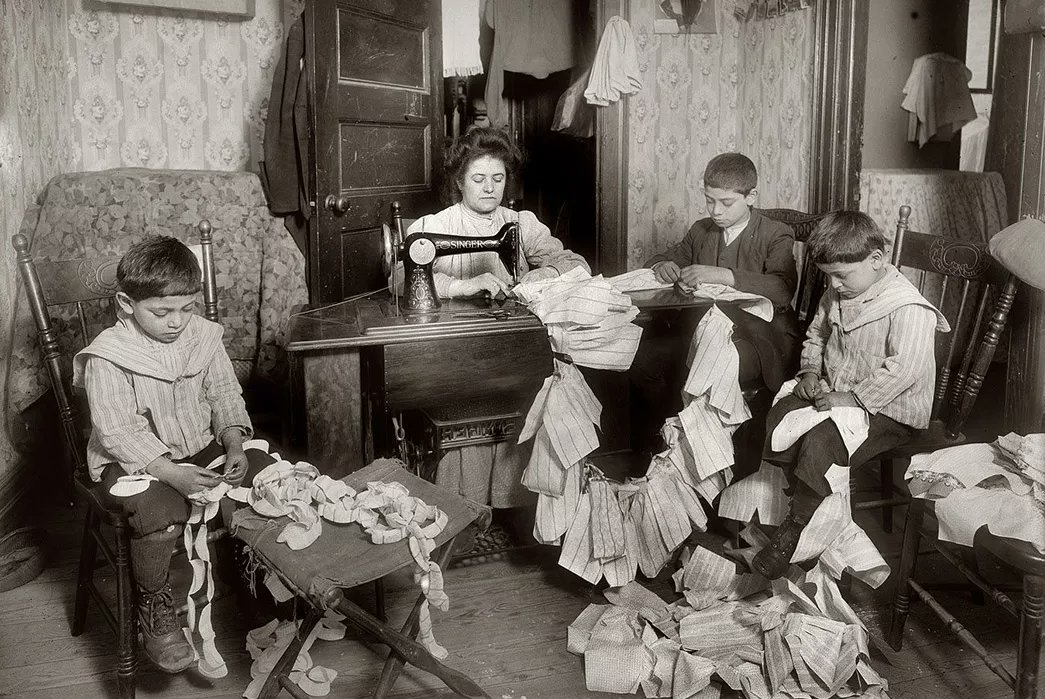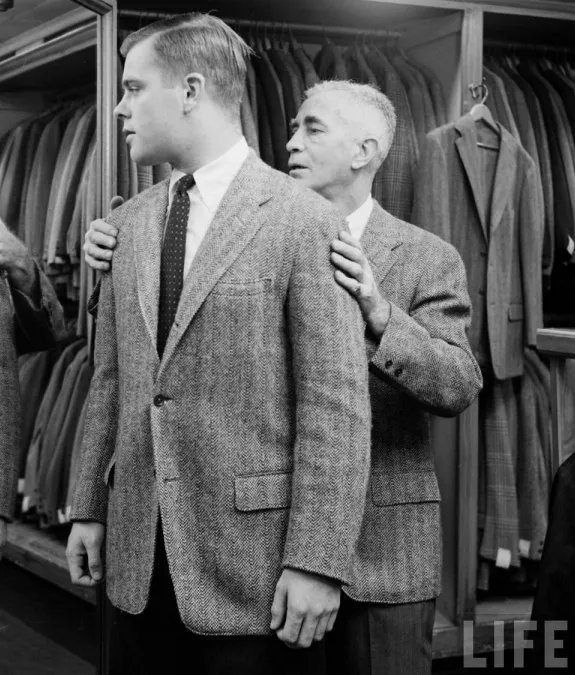"China makes crappy clothes anyway, so who cares?"
This is a very outdated view. Let me show you just one shop in Beijing, which I think makes clothes that surpasses Loro Piana, The Row, or whatever luxury ready-to-wear brand you can name. 🧵
This is a very outdated view. Let me show you just one shop in Beijing, which I think makes clothes that surpasses Loro Piana, The Row, or whatever luxury ready-to-wear brand you can name. 🧵

Atelier BRIO Pechino started as a multi-brand store that held trunk shows with bespoke tailors and shoemakers from around the world. Over time, they've developed as their own tailoring house, which I think excels bc of the proprietor's high taste and their craftspeople's skills. 



For example, on the right is your typical hand padded lapel, where a tailor has picked up multiple layers of material with needle and thread, and shaped them through stitches. This is sort of workmanship is pretty standard, even on Savile Row. 



But look how much neater, tighter, and finer the stitching is on this BRIO jacket. This level of finesse often comes with a cost—more stitches in an area, the stiffer the lapel. But somehow BRIO still makes it very soft. 



Combined with good ironwork, quality pad stitching is how they're able to get so much shape through this chest and lapel. Look at how the lapel blooms out of the coat's buttoning point. By contrast, the Loro Piana sport coat in pic 2 looks pretty flat.


Here, a larger sleeve is inserted into a smaller armhole. Tailors are thus forced to figure out a way to distribute the fullness. In Italy, they tend to push all the excess to the top, making the sleeve form a waterfall effect. BRIO does it pretty well, I think. 



Ready-to-wear brands sometimes try to copy this, but when it's not done by skilled hands, I think the result can just look like a messed up sleeve. To me, this doesn't have the elegance of the BRIO version above (less waterfall, more Seinfeld puffy shirt). 



Here's a pure cashmere overcoat. The edge of the lapel has been turned inward and then stitched down by hand using a pick stitch. This is why the edge looks plump. You can barely make out the gentle pick stitch, which I think makes it look better than the machined lapel in pic 3. 





This "doppio uso" coat is made from vintage Joshua Ellis cashmere fabric. It features the same "swelled edge" above, but also has a neat detail at the back: a handmade half belt constructed with Barenia leather. Barenia leather is what you find on Louis Vuitton bag handles. 



The soft dimples you see on this leather backing indicate the material was attached by hand. You can tell because while the stitching is nearly perfect, it's not entirely perfect (a machine stitch would look more consistent). I think that gives it a sense of "humanness." 

The now defunct French brand Arny's was famous for this unusual coat inspired by British gamekeepers jackets, Japanese kimono sleeves, and Chinese Mao collars. Famously worn by Le Corbusier and creative intellectuals in the Paris neighborhood of Saint-Germain-des-Prés. 



I've always thought that Arny's jacket, known as the Forestière, was interesting but too dandy for me to actually wear. BRIO made their version of the design from more subdued Lovat tweed. I like how the fullness is gathered in the sleeves and through the back. 





The shop's proprietor, George, is a car collector, so he designed this driving jacket. The sleeves are extra long so they cover your wrists while driving and then fold back when you're not. The hip pocket is designed to carry driving gloves, but with bulk distributed inward. 



Check out this Loro Piana Roadster jacket (also a driving jacket and one of the company's best known products). The hip pocket features a flap finished with suede on the underside—cool and decorative, but doesn't add much in terms of function. 



On this BRIO sport coat—made from Loro Piana cashmere-silk fabric—the suede trim has been added to the pocket's top edge. This stops the edge from fraying, which is useful in high-traffic areas like a pocket when the material is delicate. Adding this takes skilled work. 



To me, those small details—which are much easier to appreciate in person than over a screen—are what make their garments stand out. If you love craft, they're like visual candy. But even the general silhouette is better than what I often see from luxury ready-to-wear. 

On the left is a Chinese-made BRIO sport coat; on the right is an Italian-made sport coat from The Row. To me, there's no shape to the second jacket. It looks limp and oversized. Even worse when closed. This is the sort of stuff I see sports players wear and I'm often confused. 





When people say that Chinese-made clothes are cheap, shoddy, or made in sweatshops, they are simply basing their opinion off stereotypes. Certainly, a lot of crap comes out of China (Shein, for instance). But not all Chinese production is Shein. 

The crap that comes out of China is a result of two things: what brands request and are willing to pay for + what consumers purchase. If the US were to close off all of its Chinese imports, it's not like consumer demand for cheap clothes suddenly disappears.
In Los Angles, you can find fast fashion brands like Fashion Nova, Lulus, and Lucy in the Sky. Workers get paid 15 cents to make $50 dresses, taking home $350/ week for 84 hours of labor. We should recognize how we drive these systems with our own purchases. 



This is a Twitter thread, so I can't do deep dives into all the cool brands that make quality clothes in China. Each label utilizes China's manufacturing capabilities for different things (detailing on RRL is tremendous). But China is not all "cheap crap." 

• • •
Missing some Tweet in this thread? You can try to
force a refresh























